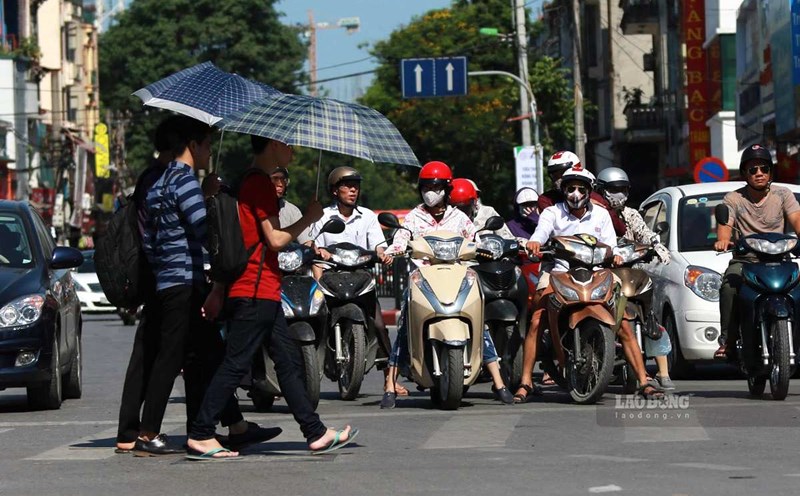According to the latest weather forecast from the US National Oceanic and Atmospheric Administration (NOAA), the entire United States will experience a above-normal hot summer. No region is forecast to have lower than average temperatures. Even Alaska - once considered a heat avoidance - is in the red zone of this years heat map.
In Korea, meteorological experts warn that this summer could break all previous records for heat waves and tropical nights - the phenomenon of night temperatures not dropping below 25 degrees Celsius, causing the body to not recover after a sunny day.
The global temperature is rising linearly, but heat waves are rising multiplied, emphasized Professor Lee Myong-in, a senior expert at the Korea Thermal Wave Research Center.
The phenomenon of heat dome - where low-rise and high-rise superstructures overlap to form a hot blanket - is gradually becoming a new normal in East Asia. Last summer, South Korea recorded 30 days of heat waves and 20 tropical nights, the highest number ever.
China cannot escape that trend. At the end of May, nearly 100 meteorological stations in the Central and Northern regions of the country recorded record-breaking temperatures, exceeding 40 degrees Celsius. The capital of Ha Nam - Trinh Chau - reached 41 degrees Celsius, while Lam Chau even reached 43.2 degrees Celsius. This warming comes with double risks: water shortage, flash floods, and a series of medical emergencies.
In Spain, the African air flows from the South, turning May into July. Seville and Cordoba burned residents to 40 degrees Celsius the first time in more than 70 years that May temperatures have reached that level. "Tropical nights" cause millions of people to be restless, lose sleep, and increase the risk of stroke due to heat.

In Vietnam, on May 31, the Central region recorded hot weather, many places were very hot with the highest temperature commonly 35-36 degrees Celsius, some places above 36 degrees Celsius such as: Nhu Xuan (Thanh Hoa), Quy Chau and Do Luong (Nghe An), Hue, Phan Rang (Ninh Thuan). The lowest relative humidity is commonly from 55-65%.
The Vietnam National Center for Hydro-Meteorological Forecasting said that from June 1-2, the Northern region will continue to have hot weather, with some places experiencing severe heat with the highest temperature commonly 35-37 degrees Celsius, some places above 38 degrees Celsius. The lowest relatively humidity is commonly 50-55%.
In the Central region, the hot weather will continue to be widespread, with some places experiencing severe and especially severe heat. The highest temperature is commonly 36-38 degrees Celsius, some places are over 39 degrees Celsius. The lowest relative humidity is commonly 45-50%.
Warning, widespread hot weather in the Central region is likely to last for many days to come. Meanwhile, from June 3, the hot weather in the North tends to end.












